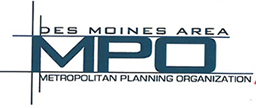Name one sustainable community. Just one. Any one. Guess what? It doesn’t exist.
You’d never know it from looking at the marketing campaigns, slogans, and ads of the last few years. Everyone’s in on the game: Green cars! Sustainable planes! Recyclable vehicles! Huh? Can a plane be sustainable? Do we even care if it is? It’s time to step back from the buzzwords and remember the point.
Here’s my own definition of sustainability: The ability to use something over and over again, and still have it available for your grandchildren to use it over and over again. I haven’t found many people who argue this point; it’s ok to build something, sell something, travel, cook, play, learn, and live your lives, as long as others after us get to do the same.
The problem is, not a whole lot of what we do, especially in transportation, fits that definition.
If a car gets good gas mileage, does that make it sustainable? Probably not, but maybe we’re missing the point. Good gas mileage when you have to drive 100 miles per day still generates emissions, requires more street pavement, and adds cars to the road. Maybe it’s time we stop talking about sustainability as an end state, and start talking about becoming more sustainable. Driving generates emissions, but needing to drive shorter distances because the jobs, stores, schools, we need to live our daily lives are closer together, means generating fewer emissions. Allowing our children to walk or bike to school by providing safe, comfortable routes, means we can drive a little less and encourage their physical activity. Balancing the amount of paved surfaces by providing off-road trails means less water runoff and reduced flood potential.
Sustainability isn’t meant as an onus to limit how we live (and especially how we travel), but as an encouragement to get the most out of every dollar of transportation investment. If we provide the homes, jobs, schools, and stores nearby and provide options for people to travel by all modes, the result is that people travel to home, work, school, and stores by all modes. By being able to go to all these places using multiple modes, we spread the demand across all modes and reduce the demand for any one mode. That lets more people, and future generations, enjoy each of the modes over and over again. That’s not telling people not to drive. That’s providing choice so people can make their own decisions. Sound familiar? By forgetting sustainability, and aiming towards balancing demand, we provide choice and get more value out of our investments. The end result isn’t a perfectly sustainable system; the end result is a more sustainable system. And that’s something we can be proud to leave our grandchildren.
 David Fields, AICP, is a multimodal transportation planner and Principal at Nelson\Nygaard. David believes transportation choice is a means to helping communities achieve greatness.
David Fields, AICP, is a multimodal transportation planner and Principal at Nelson\Nygaard. David believes transportation choice is a means to helping communities achieve greatness.




Well said!
Pingback: Looking to the Past for the Future | The Tomorrow Plan